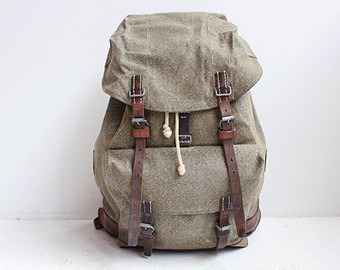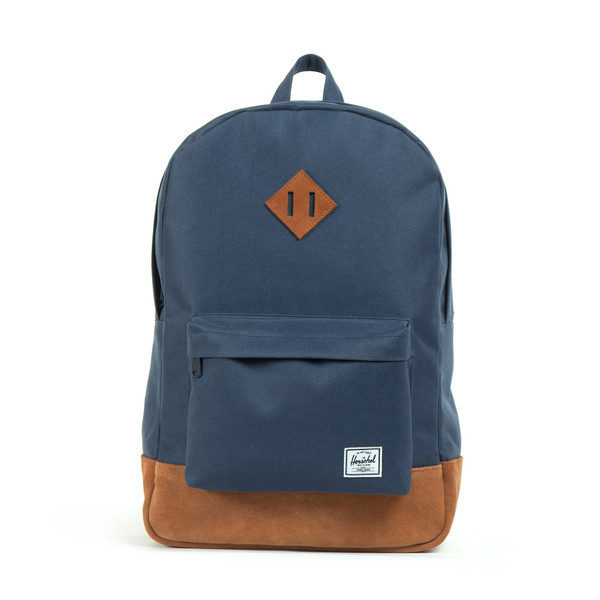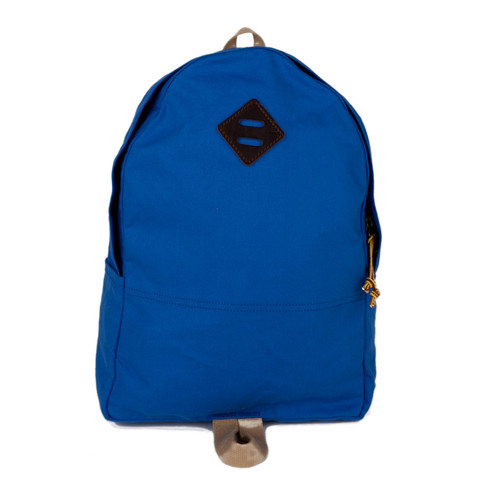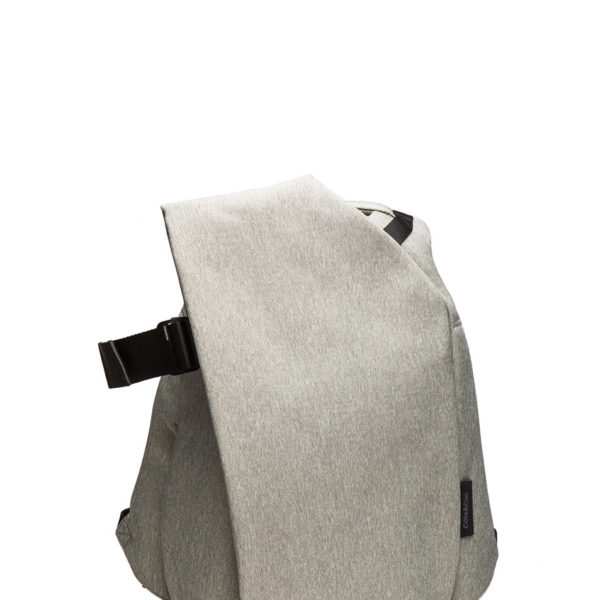
Put This On is on record as against backpacks with suits (a position I stand by–it usually looks silly and can ruin a suit’s shoulders), but I don’t wear a tailored jacket most days, so I do carry a backpack. I’d love to go to work with nothing but a wallet, keys, and a smile but most of the time I’m lugging more: lunch, a camera, a laptop or tablet, and gym clothes. A backpack is the easiest and most comfortable way to move that stuff. A recent Wall Street Journal piece pointed out that packs have become the luggage of choice for runway designers, although these design-first bags are often short on usability. Modern technical packs from outdoor stores/brands have pockets to spare and good technical performance, but I find the best balance of utility and design in between the technical and design worlds. I’ve handled a lot of the packs on the market and can recommend a few in different price ranges.
Under $100
Herschel Supply: Herschel Supply cracks the list because they make a basic update of the 1980s/90s day packs that became schoolbook staples and because they’re inexpensive. Herschel Supply gets important, basic things like water resistance and internal laptop sleeves right, and offers a variety of relatively subdued styles plus some wilder fabric patterns. Despite a healthy dose of heritage-y branding, Herschel is a young brand and the bags are imported and frankly a little flimsy compared to other options.
Vintage: Buying a pack vintage is risky–you don’t know what leaked on that pack’s last hike. But there are some sturdy, good looking packs on the vintage market. Yucca packs are basic canvas packs often used by Boy Scouts in the pre-Jansport era (and stamped accordingly with BSA insignia). They’re large, floppy canvas bags, and sell pretty cheap. In my opinion, fine for a trip to the farmer’s market, but I wouldn’t trust one with my laptop. Swiss packs in “salt and pepper” fabric are quite roomy and look great with some patina on the leather straps, but some are frankly past the point of realistic usability, and the market has become more competitive in recent years, driving some prices north of $100.
$100-$200
Archival Clothing’s daypack is your basic modern heritage backpack–one big compartment that zips closed, smaller open side pockets, and unpadded webbing straps. AC’s cotton duck fabric is not waterproof, but it’s lighter (and less costly) than the waxed fabric AC uses in some of its other bags. AC’s build quality is universally top notch and I really like their unfussy designs, which reference older styles without requiring a full hikerdelic wardrobe.
The Kelty Mockingbird is the long-standing gear company’s modern interpretation of one of its 1960s mountaineering models. Made of Cordura nylon, it has a cinch-top main compartment, padded straps, and removable lash-on side compartments. (Cordura is the brand name for the woven nylon fabric used in much, if not most, modern soft luggage. Most bags, including the Mockingbird, are 500 denier–a measurement of density–but some use 1000 denier, which is more durable but stiffer and heavier.) Kelty made vintage-style bags for the Japanese market for several years before bringing the designs stateside. I’ve carried this pack most days for over two years with few complaints. One potential drawback of this era of design is the number of straps, pulls, and lash tabs–not the place to look for a minimal appearance.
$200 and up
In the heritage-styled arena, I like California’s Altadena Works, which makes a daypack-styled bag that checks every box on my personal pack list. Cordura fabric, Horween leather-reinforcement on the bottom, seatbelt nylon webbing straps with wool felt padding, and thoughtfully laid out pockets, all made in California. Like a better, more worldly version of the Jansport I carried in high school.
Cote et Ciel provides an alternative for those not as interested as I am in looking like a 1970s Patagonia catalog. The Isar rucksack has two significant compartments: a zipped, padded laptop/tech compartment that sits against your back, and a larger gear compartment that zips vertically down the center then folds over to give the bag its asymmetrical appearance. Padded straps attach in the middle of the pack rather than at the edge toward the body (it’s complicated; Carryology has a good review that explains with photos) and hug the tech compartment to you. Cote et Ciel uses a number of cotton blend fabrics, all of which claim to be water resistant.
-Pete




